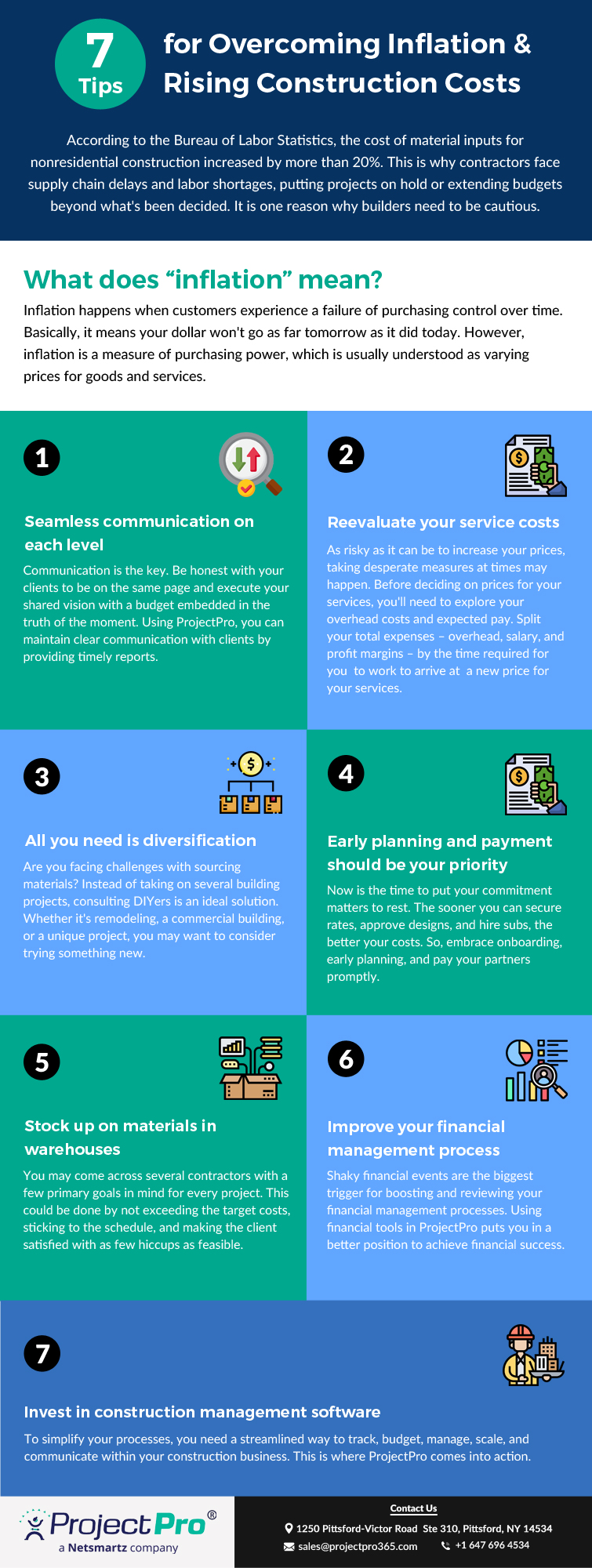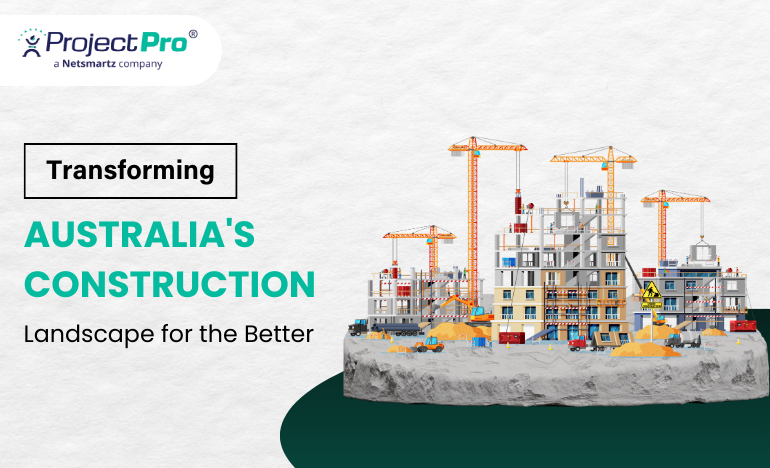7 Tips for Overcoming Inflation & Rising Construction Costs

Inflation has become very common globally, and we all deal with it daily. Whether it’s rising food costs at the grocery store or grumpiness at the gas pump, Americans face high costs in every direction. Construction is not an exception in this regard.
According to the Bureau of Labor Statistics, the cost of material inputs for nonresidential construction increased by more than 20%. This is why contractors face supply chain delays and labor shortages, putting projects on hold or extending budgets beyond what's been decided. It is one reason why builders need to be cautious.
We're here to help you through these rising construction inflation rates and equip you with the facts you need to confront these rugged supply and demand cycles with certainty and clarity.
What does “inflation” mean?
Inflation happens when customers experience a failure of purchasing control over time. Basically, it means your dollar won't go as far tomorrow as it did today. However, inflation is a measure of purchasing power, which is usually understood as varying prices for goods and services.
If we look at the U.S., there are two primary ways to measure inflation:
-
The Consumer Price Index: This measures the cost of things customers purchase out of pocket.
-
The Personal Consumption Expenditures Index: This measures what people consume, even items they do not pay for instantly, for instance, health care.
The Federal Reserve's job is to keep track of prices and keep them from growing too rapidly. The goal is a 2% annual rise, and a little consumer price inflation is considered positive in the fluctuating economy. Nevertheless, various other factors have influenced America's existing economic situation, and you – and your wallet – are likely sensing the effects.
What is the major cause behind inflation?
Multiple factors contribute to the present inflation situation in America. Initially, supply chain and production issues kept goods in short supply. This forces prices up, placing businesses – and builders like you – in a place where they must increase prices to compensate for insufficient supply.
Players may also charge more because they discover they can inflate prices and enhance profits amid rising global costs.
Amidst global economic recovery efforts, supply chain and labor scarcities have led to the closure of numerous contractors. Now, as the world strives to regain its economic footing, it is imperative that we collaborate to address the substantial increase in costs.
How can you survive with the rising construction costs and inflation?
As a construction contractor, the impacts of inflation might include:
-
Abrupt material costs.
-
Strict client budgets.
-
More extended lead times.
-
Backlogged projects.
-
Higher wages for labor.
So how can you work through these obstacles and still get the job done?
1. Seamless communication on each level
Building a house is not a minor deal. Your clients are affected by inflation – like you and feel overwhelmed. Everyone needs to be wise with their budgets because we're all in it together.
So communication is the key. Be honest with your clients to be on the same page and execute your shared vision with a budget embedded in the truth of the moment.
Using ProjectPro, you can maintain clear communication with clients by providing timely reports.
Likewise, keep clear and consistent communication with your managers and subcontractors to mitigate as much pain as possible. All stakeholders must document and communicate uncertainty in cost changes, shipments, or fluctuating project timelines.
2. Reevaluate your service costs
As risky as it can be to increase your prices, taking desperate measures at times may happen. Those who want to function with you will understand, and your team will be equipped to help more people and take on better projects if you can set some costs back on your clients.
Before deciding on prices for your services, you'll need to explore your overhead costs and expected pay. That overhead cost is where you'll witness an upsurge due to inflation, and you can examine those numbers alongside your billable hours and profit margins to fix your rates.
Split your total expenses – overhead, salary, and profit margins – by the time required for you to work to arrive at a new price for your services.
3. All you need is diversification
Are you facing challenges with sourcing materials? Are your building workers in high demand to meet your timeline? Does it all just feel unimaginable? While swinging through this inflation wave, consider diversifying your clientele and offerings.
Instead of taking on several building projects, consulting DIYers is an ideal solution. Could you believe a few larger experts with various types of clients while you wait for the construction market to level out? Whether it's remodeling, a commercial building, or a unique project, you may want to consider trying something new.
4. Early planning and payment should be your priority
Now is the time to put your commitment matters to rest. The sooner you can secure rates, approve designs, and hire subs, the better your costs. So, embrace onboarding, early planning, and pay your partners promptly. This will help you streamline the material purchasing, estimating process, and whole project.
We know it’s valuable to have time to make major decisions. However, if you and your client can decide how to roll, it’s best to be prepared with funds. The sooner you approve, hire, and cooperate with subs who can get you what you require – the better.
5. Stock up on materials in warehouses
You may come across several contractors with a few primary goals in mind for every project. This could be done by not exceeding the target costs, sticking to the schedule, and making the client satisfied with as few hiccups as feasible. Inflation throws a wrench in the works.
Another way to ensure you have materials when you need them is to stock them and make them available at reasonable prices. This is where you can leverage warehouse storage and ensure they are prepared when the time comes.
Don’t purchase out of the market. At this point, you need to be strategic with your material purchases. If there are a few selected items you use regularly or might have a problem procuring at a later date, consider buying stocks more often than you usually would. Just make sure you have the storehouse and clientele to use it.
6. Improve your financial management process
Shaky financial events are an excellent trigger for boosting and reviewing your financial management processes. Using financial tools in ProjectPro puts you in a better position to achieve financial success.
Take a look at our financial tools, such as cost codes, progress reporting, job material planning, and invoicing, to take your financial management to the next level.
7. Invest in construction management software
To simplify your processes, you need a streamlined way to track, budget, manage, scale, and communicate within your construction business.

ProjectPro gives you amazing financial control and comprehensive features that help boost your profits. Also, you get easy access to an award-winning customer service team that’s always by your side. We ensure that your business reaches new heights – even with inflation.
For more information, you can schedule a demo today.




.jpg)


